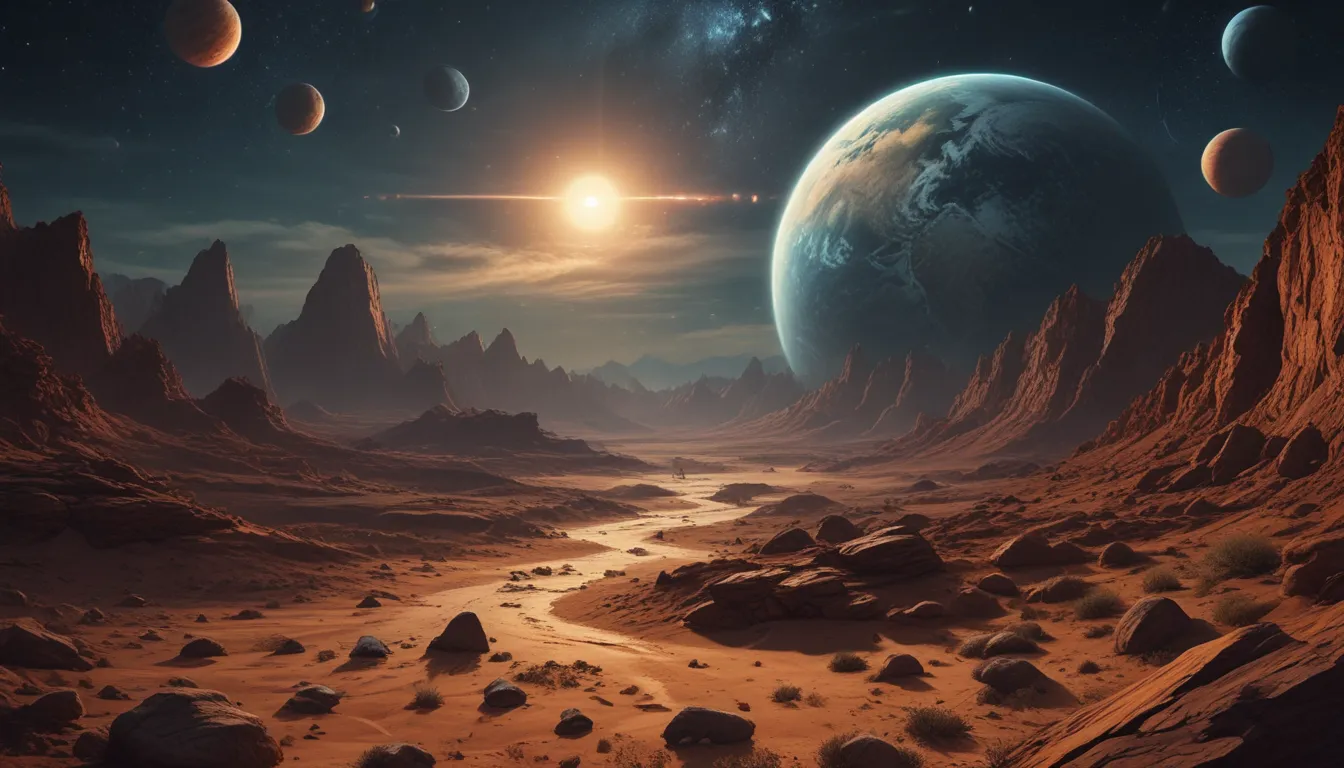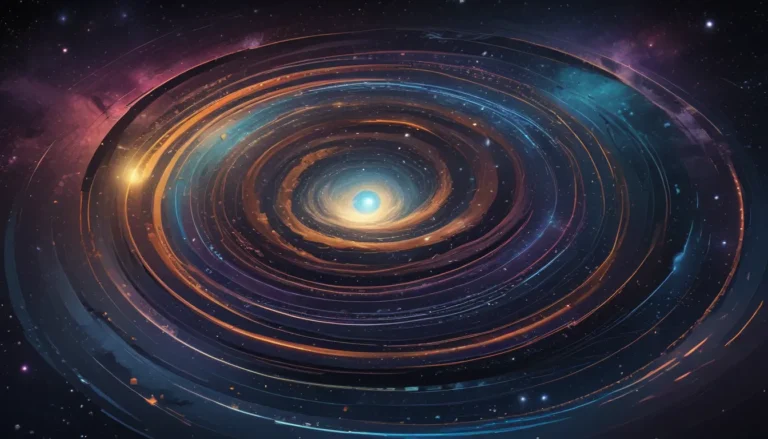The pictures we use in our articles might not show exactly what the words say. We choose these pictures to make you interested in reading more. The pictures work together with the words but don’t take their place. The words still tell you the important facts.
Planetary seismology, the study of seismic activity on celestial bodies beyond our planet, offers an exciting glimpse into the mysteries of the universe. While we are familiar with earthquakes on Earth, it may surprise you to learn that seismic events also occur on other planets, moons, and even asteroids. In this article, we will embark on a journey through the seismic landscapes of our solar system and beyond, exploring 19 surprising facts about planetary seismology. From moonquakes on the Moon to the rhythmic shaking of Saturn's moon Enceladus, get ready to delve into the fascinating world of planetary seismology!
Understanding Planetary Seismology
Planetary seismology is a branch of geophysics focused on studying the seismic activity within planets, moons, and other celestial bodies. By analyzing the vibrations and movements within these bodies, scientists can gain valuable insights into their internal structure, composition, tectonic activity, and potential for sustaining life.
Unveiling Planetary Secrets
-
Insightful Vibrations: Planetary seismology helps scientists understand the internal structure of planets by analyzing seismic waves generated by earthquakes or impacts. This information reveals details about a planet's composition, density, and overall structure.
-
Legendary Lunar Data: The first seismometer on another planet was installed on the Moon during the Apollo missions of the 1960s and 1970s. This groundbreaking initiative provided valuable data about lunar quakes and the Moon's internal structure.
-
Mars Unveiled: In 2018, the NASA spacecraft InSight deployed a seismometer on Mars, enabling scientists to study the planet's seismic activity and gain insights into its geological characteristics.
Exploring Celestial Dynamics
-
Tectonic Tales: Planetary seismology helps determine if a planet has tectonic activity by studying the distribution and characteristics of seismic events. This allows scientists to identify plate tectonics or other forms of tectonic movement.
-
Volcanic Voyages: Seismic monitoring can detect volcanic tremors and eruptions on other planets, offering key insights into their volcanic history and current activity levels.
-
Asteroid Awareness: Seismology can aid in predicting the impact of asteroid collisions by analyzing seismic waves generated during impacts. This information helps assess potential risks to inhabited planets.
Discovering Celestial Spectacles
-
Jupiter's Jolts: The massive size and turbulent atmosphere of Jupiter create powerful and frequent seismic activity. Storms and atmospheric disturbances generate seismic waves that can be detected by spacecraft.
-
Ringing Revelations: By analyzing seismic waves, scientists can gain insights into the processes that create and shape planetary rings, such as gravitational interactions and impacts with small bodies.
-
Mercury's Mysteries: Mercury experiences frequent seismic activity due to its shrinking core. The cooling and contracting core lead to tectonic activity, offering clues about the planet's geological history.
Navigating Cosmic Terrain
-
New Horizons: Compared to traditional seismology on Earth, the study of seismic activity on other planets is relatively new. Many discoveries are yet to be made, making planetary seismology an expanding field of exploration.
-
Exoplanet Excursions: By studying the seismic activity of exoplanets, scientists can gather information about their composition and potential habitability, contributing to the search for extraterrestrial life.
-
Subterranean Surprises: Seismic waves can reveal the presence of underground oceans on icy moons and other celestial bodies. By penetrating through layers of ice and rock, scientists can detect subsurface water bodies.
Unveiling Lunar Enigmas
-
Lunar Legacy: The Moon's seismic data has uncovered information about its volcanic history, impact cratering, and interior dynamics, shedding light on the early evolution of the Earth-Moon system.
-
Moonquakes and More: Seismic activity on the Moon, known as moonquakes, continues to reveal the complex history and geological dynamics of our closest celestial neighbor.
-
Habitability Clues: Understanding the geological processes of other planets is crucial in assessing their potential for sustaining life. Planetary seismology plays a vital role in determining the habitability of other celestial bodies.
Looking to the Future
-
Exploration Insights: Planetary seismology enhances our knowledge of Earth's geology by providing valuable comparisons and insights into our planet's own geological processes.
-
Future Endeavors: Several upcoming missions focus on planetary seismology, with initiatives like NASA's InSight mission to Mars equipped with seismometers to study Marsquakes and the planet's interior structure.
-
Tidal Triggers: Seismic activity on other planets can be triggered by tidal forces exerted by nearby celestial bodies, contributing to the overall dynamics of planetary systems.
-
Cosmic Discoveries: As technology advances and more missions explore different planetary bodies, the field of planetary seismology will continue to expand, unraveling new mysteries and enhancing our understanding of the universe.
Embracing the Cosmic Journey
As we delve into the wonders of planetary seismology, we uncover the intricate tapestry of celestial dynamics that shape our universe. From Mars to Enceladus, each seismic event offers a glimpse into the inner workings of our cosmic neighborhood. By studying planetary seismology, we not only gain insights into the geological evolution of planets and moons but also pave the way for future space exploration missions. As we venture deeper into the cosmos, each seismic wave carries us closer to unraveling the mysteries of the universe.
Join the Exploration
Embark on a journey through the captivating world of planetary seismology and discover the enigmatic behavior of seismic waves. Explore Earth's secrets and dive into the intriguing realm of tectonic activity, shaping our understanding of celestial bodies across the cosmos. Uncover the mysteries that await and embrace the cosmic journey of planetary seismology.
About Us
Resonancescience.org is dedicated to delivering trustworthy and engaging content, with each fact on our site contributed by real users. Our commitment to quality and authenticity ensures that the information we share is not only fascinating but also credible. Trust in our dedication to delivering valuable insights as you explore the wonders of planetary seismology and beyond.
FAQs
-
What is planetary seismology? Planetary seismology is the study of seismic activity and vibrations on planets, moons, and other celestial bodies to understand their internal structure and geological dynamics.
-
How do scientists detect seismic activity on other planets? Scientists use seismometers, instruments that detect and measure seismic waves, to study seismic events on other planets.
-
What surprising discoveries have been made through planetary seismology? Surprising findings include active tectonic activity on icy moons and evidence of Marsquakes, revealing the seismically active nature of Mars.
-
How does planetary seismology contribute to space exploration? Planetary seismology provides valuable insights for future space missions by identifying landing sites, assessing exploration safety, and uncovering geological processes.
-
Are there future missions planned for planetary seismology? Yes, upcoming missions, such as the NASA InSight mission to Mars, will focus on studying seismic activity on various planetary bodies to expand our understanding of the universe.
Join us as we uncover the mysteries of planetary seismology and immerse ourselves in the captivating world of celestial dynamics. Let's embark on this cosmic journey together, exploring the wonders that wait to be discovered beyond the confines of our planet.






